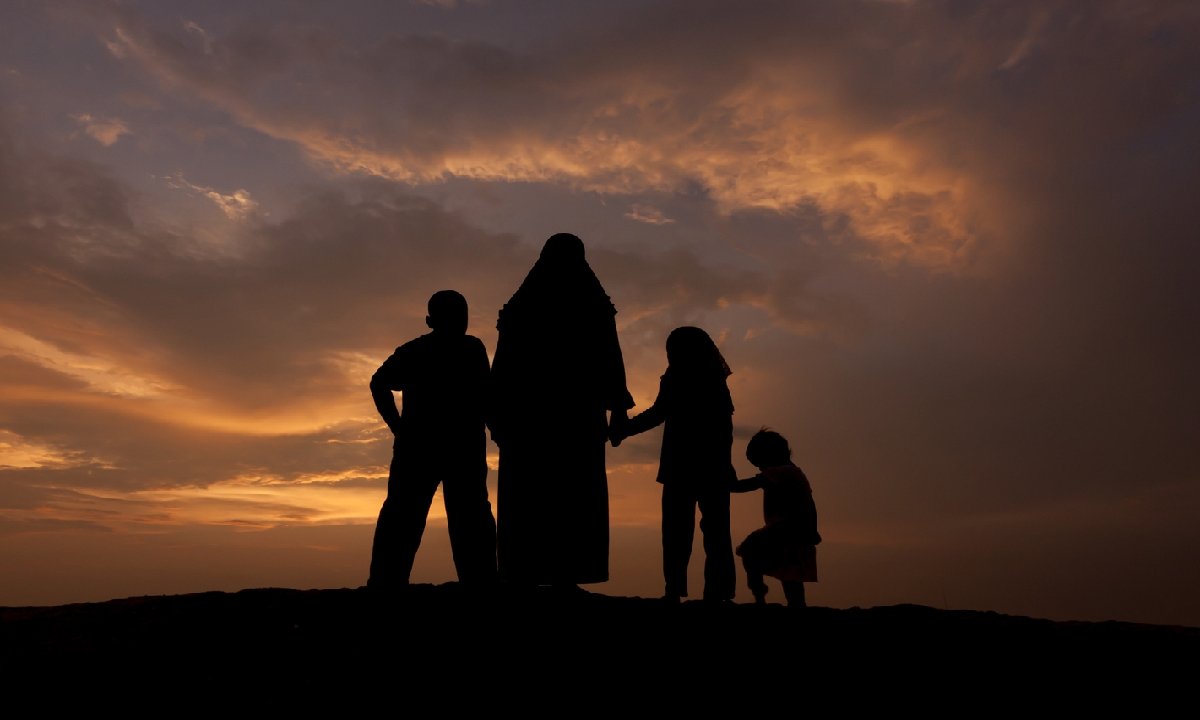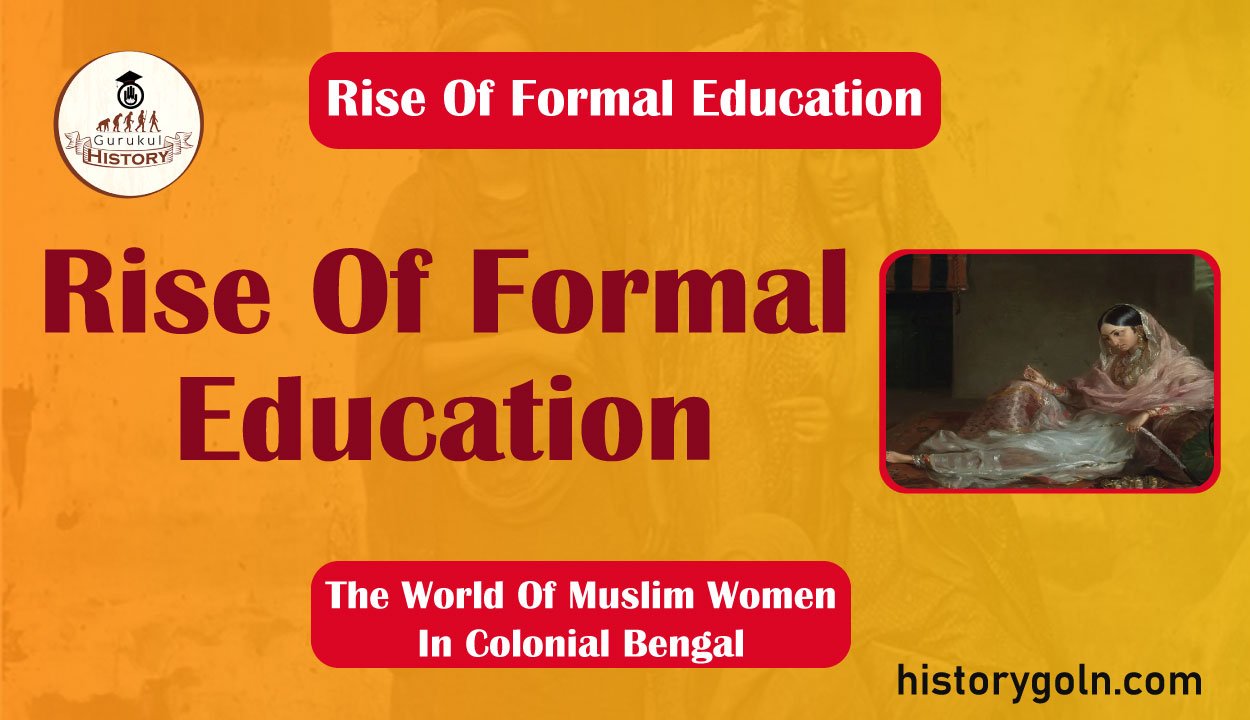Today our topic of discussion is Rise Of Formal Education .
Rise Of Formal Education

Changes in the institution of the family at the beginning of the twentieth century were not isolated from the changes occurring in other domains such as education. The need for the institutionally educated woman was generated by needs which first manifest themselves within the domestic sphere.
The lifestyle of the middle class salariat provided the context for women who were trained in the new strategies of domesticity – the thrift and efficiency required to run a nuclear household unaided by elderly mothers-in-law, the enlightenment to offer companionship to a husband isolated from the former circle of family and friends, the graces to survive in the world of ‘native’ officialdom and the capability to train sons and daughters for the new world.
Education in the form that it has taken today was introduced by the British and assumed importance because of its colonial policies. British policies in the economic, political, judicial or educational spheres were undertaken from the perspective of colonial rule, i.e. whether or not particular policy “advanced or impeded the spread or stability of that rule.”
The British project of promoting education in India thus stemmed not so much from altruistic motives to improve the mind, morality or material lot of Indians, than from the colonists need to create a class of wester- nized Indians to serve them.
In order to make an impact in the new economic or political sphere, it no longer sufficed for men to receive the traditional education that had been imparted for centuries.
Realizing that if it were to share in public and economic life. it was crucial to come out of the cocoon where the dis- empowered Muslim polity had taken shelter after 1857, Muslim leaders, in Calcutta, Dhaka, Hughli and other cities, had launched an all round Reform Movement inspired significantly by the ideas emanating from Aligarh. Edu- cational Reform and Women’s Reform were important items on this agenda.
Emerging from the mists of the aftermath of 1857, the new middle class gentry set about the task of modernization fast acquiring new skills – through western education, improving the conditions of women including their education, and redressing social ills. Education for the ‘new man’ (and later the new woman’) could be provided only by institutions re-formed along western lines.
One of the first issues that assumed significance for women in India in what came to be recognized as the Women’s Reform Movement, was the right to education. Education and literature were, in fact the two arenas where the Women’s Question manifest itself in nineteenth century Bengal.
As changes in the private sphere produced contradictions in woman’s tradi tional role, these contrary pulls coalesced around the issue of education seeking a new resolution there. It was thus the first great mediator for women between the home and the world.
It was, unlike the family, a region where there was scope for governmental intervention an intervention which led to the formation of supporting and opposing groups among the local populace and the heated debates (see Chap. V). The entire issue was not just one of how many girls attended school in a particular locality.
Education was the site where changing norms and notions regarding pur- dah, female sexuality, the ‘true’ nature of woman, her role within the home and without, were all to be spelled out.
To the reforming Bengali mind, education, apart from being a means to a profitable career (for men), was a panacea for many social evils of the day a wishful cure for the maladies perceived all around.

In the great era of Hindu Reform, men such as Akshay Kumar Dutt and Vidyasagar had consistently built the case for female education on the foundation of the home. Akshay’s Dharma Niti was one of the first tracts on the issue:
there emerges from the author of Dharma Niti, far more than from any other Bengali writer, the rational justification for making female education and emancipation the central issue of Hindu social reform.
As Akshay Kumar reviewed the social evils in the Bengali family, he found that almost all derived from the servile and oppr- essed condition of the women in the household. Here then must social reform begin, and it must begin through education.”
The success of the first phase of educational reform was marked by the founding of Bethune Female School in Calcutta in 1849. The students were mostly Brahmo, Hindu and Christian.
By some importunate clause in its constitution Muslim girls were not allowed admission as late as 1897. Not that Muslim girls would have flocked there in large numbers. The Muslim Community took a back seat as the major urban centres made notable adv- ances in female education. Moreover in this case there were some special deterrents.
Generally men were required to acquire an ‘English education’ it was felt, as a means to earning a livelihood. This impetus was absent in the case of upper/middle class women for it was unheard of that they work. The other deterrents were moral in nature. They came in the form of a perceived threat to the system of regulation of female sexuality.
Firstly, an education was seen as being conductive to female intransigence; an educated girl was less amenable to obedience, and less disposed to household duties. An education report recorded the remarks of a district official in Assam regarding prevalent anxiety on the matter:
parents think they [girls]… despise ordinary household duties if they learn how to read and write. Girls thus qualified are also said to become dushta [bad), which I imagine means they are less amen- able to discipline and less likely to submit to parents’ choice of husbands.
Secondly, it was feared education would involve contravention of purdah. As observed by another colonial officer: “In the case of the higher class, it is impossible to get a number of adult females together, as to form a school, lest they should be exposed to the observation of strangers,”
As stated above, the Muslim community had withdrawn into its own shell following the uprising of 1857 and its aftermath. This voluntary withdrawal from the political and public scene, was accompanied by increased conser- vatism and reinforcement of traditional values and practices in the private sphere which affected women adversely.
They now became the repository of tradition and became a fresh symbol of purity. (Paradoxically, it was toward this refuge, this retreat of the private sphere, that the first reform move was directed. Men both turned their gaze on and turned to, the and- armahal for regeneration (see Chap.1).
A decade after 1857, a conservative uslim leader to express categorical disapproval of male education at a public meeting in Calcutta [see below] the ground being the same: purdah. Thus initially education was viewed by many as a means for loose- ning the control exercised by society over women.
It is for this reason. that it was such a central point in the struggle for women’s rights. And for this that any advance would have to be made carefully within the exis- ting framework of religion and tradition.
The conservatism of Muslim society regarding female education was voi- ced at a meeting of the Bengal Social Science Association in Calcutta, where Nawab Abdul Lateef was reading a paper on Muslim education.
In the dis- cussion which ensued, Peary Chand Mitra enquired if similar efforts at female education were under way in the Muslim community as in the Hindu. The reply came from Maulvi Abdul Hakim of the Calcutta Madrasa. He is reported to have said that the scriptures had ordained education for both boys and girls and to this end many Muslim women were renowned throu ghout history for their learning. But such education was imparted within the home.
It was unthinkable that Muslim girls, following the example set by girls in other communities, should go outside the home for education violating the purdah enjoined by religion, Abdul Hakim had concluded. Abdul Lateef, as far as the record goes, did not say anything.
Sir Syed Ahmed Khan (1817-98), the great pioneer of the Aligarh Movement and founder of a college for Muslim boys (1875), was ambivalent about female education. His opinion on the matter was circumscribed by the- backward condition of the Muslim community in general:
The fact is, that no satisfactory education can be provided for Mohammedan females until a large number of Mohammedan males receive a sound education. The present state of education among Mohammedan females is, in my opinion, enough for domestic happi- ness considering the present social and economic conditions of the life of the Mohammedans in India.
Syed Ahmed was not opposed to female education as such, but probably thought the time was not yet ripe considering the socio-economic status of Muslims. The liberal movement which he pioneered so laboriously and in the teeth of great opposition, had far-reaching influence.
Aligarh was a haven for aspiring Muslims in Bengal which sent many of her sons to the school and college there. Sir Syed had many followers who took up the issue of female education with more vigour and clarity than himself – Altaf Hussain Hali, Sayyid Mumtaz Ali and his wife Mohammadi Begum, Syed Mahmud and Sheikh Abdullah.
They advocated girls schools (Sheikh Abdullah set up a girls school at Aligarh), teacher’s training schools, published the first women’s journais, (Khatun from Aligarh, Tahzibun Niswan from Lahore, Pardanasin from Agra. Ismat from Delhi) etc. In their writings, Rokeya Sakhawat, Shamsunnahar and other reformers in Bengal acknowledged the importance of Aligarh in the life of modern Muslims. They emulated the system devised by Sir Syed.

Syed Ameer Ali’s views, on the other hand, were more cognizant of the changes occurring around him. In fact of the two notable leaders in the Muslim Community in Bengal, Nawab Abdul Lateef and Syed Ameer All, the latter’s views on female emancipation may be deemed more favorable though both spoke on behalf of a small, Persianized, urban elite, whose culture was cut off from the masses. Deploring the degraded status of women in his community Ameer Ali commented:
There are women in Northern India whose attainments, I admit, arehigh in Arabic and Persian, but… in these days their knowledge is sterile. So long as their minds run in the old groove…. there can be no prospect of progress.
See more:
